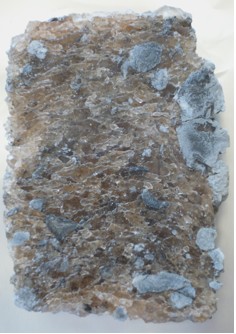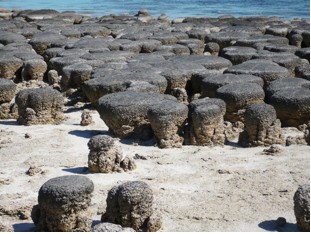Molecular Palaeontology of the Neoproterozoic-Cambrian Interval: Lipid Biomarker Geochemistry and Ancient Microbial Ecosystems
Richard Schinteie1
1 Research School of Earth Sciences, Australian National University, Canberra, ACT 0200, Australia
Lipid biomarker work began in the new biogeochemistry laboratories in Jaeger 1 in 2007. Work was conducted on a selection of Neoproterozoic and Cambrian samples from Australia and throughout the world. The aim is to reconstruct the microbial ecosystems during a time that has witnessed numerous changes: "Snowball Earth" glaciations; evolution and extinction of numerous microorganisms; the first occurrence of animals; and the oxygenation of the world's oceans.
Thus far, the results look very promising and has let to the discovery of lipid biomarkers that are over 1 billion years old. I am also trying to investigate rock samples from that period that originated in shallow water facies. So far, most investigations concentrated on deep water facies. I have collected rock samples from drill cores held at Geoscience Australia (Canberra). These rocks are from shallow water facies and contain numerous evaporate (salt-bearing) sequences (Figure 1).
Techniques aimed at removing potential contaminants from rock samples are under investigation. Thus far, the techniques have worked very well and helped to determine which biomarkers were likely derived from the Precambrian-Cambrian interval and which samples are contaminants (e.g. from the use of drilling fluids, fingerprints etc).
Field work was conducted at Hamlin Pool, Shark Bay Heritage Park, Western Australia (Figure 2). Microbial mat samples (smooth mats and tufted mats) were collected to study lipid biomarker diagenesis. Microbial mats at Hamelin Pool are significant in that they resemble fossilized microbial mats from the Precambrian (> 542 million years ago). Hamlin Pool mats flourish in saline conditions that preclude grazing animals, which would otherwise destroy them. Similar conditions were present in the Precambrian when animals had not yet evolved. Therefore Shark Bay mats are ideal candidates for understanding past biotas.
 |
 |
Figure 1. Rock sample from Geoscience Australia drill cores; brown colour = salt, grey colour = incorporated mud rock. |
Figure 2. Hamlin Pool, Shark Bay Heritage Park, WA. |